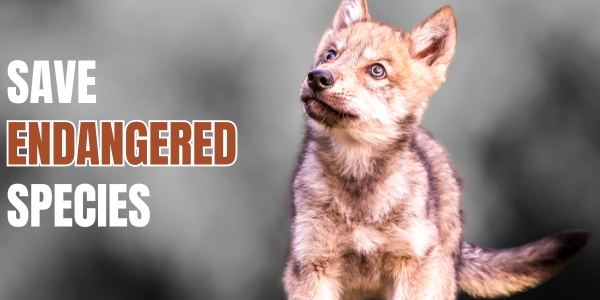Photo credit: USFWS
Dunes sagebrush lizard (Sceloporus arenicolus) | ESA status: none
Dunes sagebrush lizard
The dunes sagebrush lizard builds its own tiny kingdom among three-foot-tall shinnery oaks. Unfortunately, its habitat is smack on top of the oil-rich Permian Basin.
Dunes sagebrush lizard habitat
Dunes sagebrush lizards live in hollowed-out depressions in the sand dunes of southeastern New Mexico and a small area of southwestern Texas. Their sandy homes are rarely more than six feet away from a shinnery oak—a miniature, three-foot-tall oak tree.
The lizard (formerly known as the sand dune lizard) has one of the smallest ranges of any lizard native to North America, and it has incredibly specific habitat requirements—down to the size of the sand grains in its dune dwelling (medium-sized; not too coarse or too fine.)
Dunes sagebrush lizard life cycle
Dunes sagebrush lizards live one to two years. They eat ants, small beetles, crickets, grasshoppers and spiders. Females lay one or two clutches of eggs with three to six eggs per clutch.
What are the threats to the dunes sagebrush lizard?
Oil and gas development
The dunes sagebrush lizard’s habitat is on top of one of the most active oilfields in the United States. Oil and gas extraction is the primary threat to this lizard and its habitat, and the main reason why it has declined precipitously across its range. This lizard is extremely sensitive to habitat disturbance; studies conducted on Bureau of Land Management (BLM) land indicate that a single well reduces the dunes sagebrush lizard population by almost 50 percent in the area extending 253 meters around the well (50,152 square meters). Densities of 30 wells per square mile would reduce lizard populations by 50 percent, and 15 wells per square mile would reduce it 25 percent. Disturbance from well pads, death from leaking pipeline pollution, and peripheral activities such as seismic exploration—during which lizards and their nests can be crushed—also contribute to the decline of dunes sagebrush lizard populations.
Herbicides
Herbicide control of shinnery oak has eliminated almost a quarter of the lizard’s already-small habitat. The lizard, for reasons that are still unknown, cannot live without these tiny trees, and herbicide removal of the oaks resulted in a 70 to 94 percent decline in lizard populations over multiple years of study on herbicide-use sites.
ORVs
Off-road vehicles can crush lizards and their eggs and destroy their shinnery oak habitat. ORV use has increased substantially over the last decade. The BLM itself acknowledges that careless riders may forge beyond designated areas and into “special status species habitat,” crushing everything in their path.
What WildEarth Guardians is doing to save the dunes sagebrush lizard
The lizard has been on and off the Endangered Species Act candidate list since 1982, when it was made a Category 2 candidate as a subspecies. After being reclassified several times due to population declines and a “typographical error,” it was dropped during a general purge of the candidate list in 1996. By that time it was recognized as a full species. It was returned to the candidate list in 2001 with a listing priority number of 2, the highest rank possible for a full species, indicating that it faced high-magnitude, imminent threats to its survival. After a long wait, it was finally proposed for listing in late 2010. Meanwhile, scientists had been warning for over a decade that the dunes sagebrush lizard’s extinction was imminent. Unfortunately, the lizard was denied protection when the U.S. Fish and Wildlife Service withdrew its listing proposal in June 2012. The agency contends that current conservation agreements are adequate to protect this imperiled reptile and its dwindling habitat, but without the strong protections of the Endangered Species Act, the agreements seem to be failing.
Historical Significant Actions
U.S. Fish and Wildlife Service withdraws listing proposal June 2012
U.S. Fish & Wildlife Service proposes to list the dunes sagebrush lizard as “endangered” December 2010
“America’s Top 40” (report) April 2009
WildEarth Guardians submits comments on conservation agreements for dunes sagebrush lizard November 2008
WildEarth Guardians submits petition for emergency listing of dunes sagebrush lizard April 2008
Wildlife Press: Dunes sagebrush lizard
Feds Deny Protection to Dunes Sagebrush Lizard
Tiny Reptile must Defend Itself Against Oil and Gas Industry
Read more >